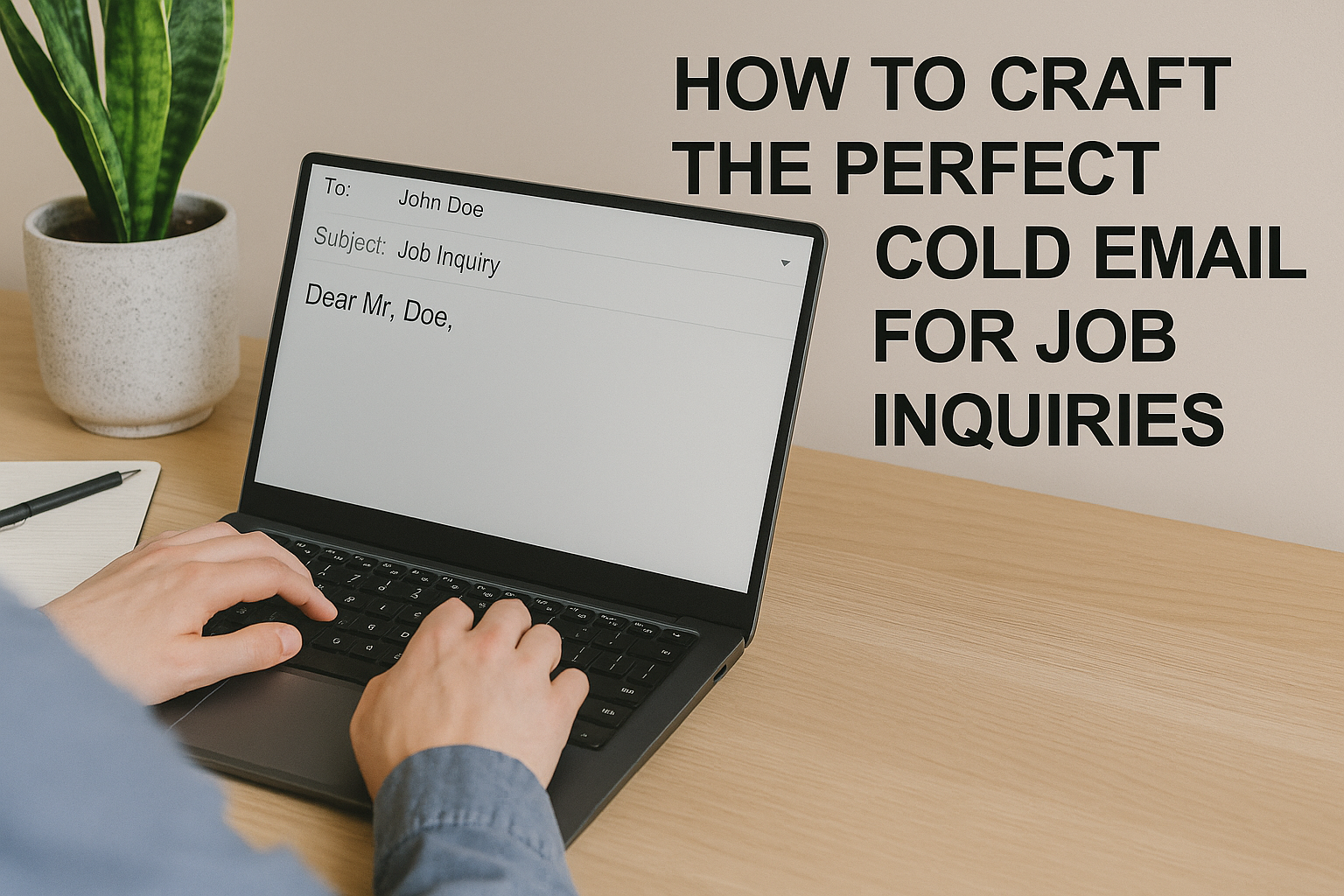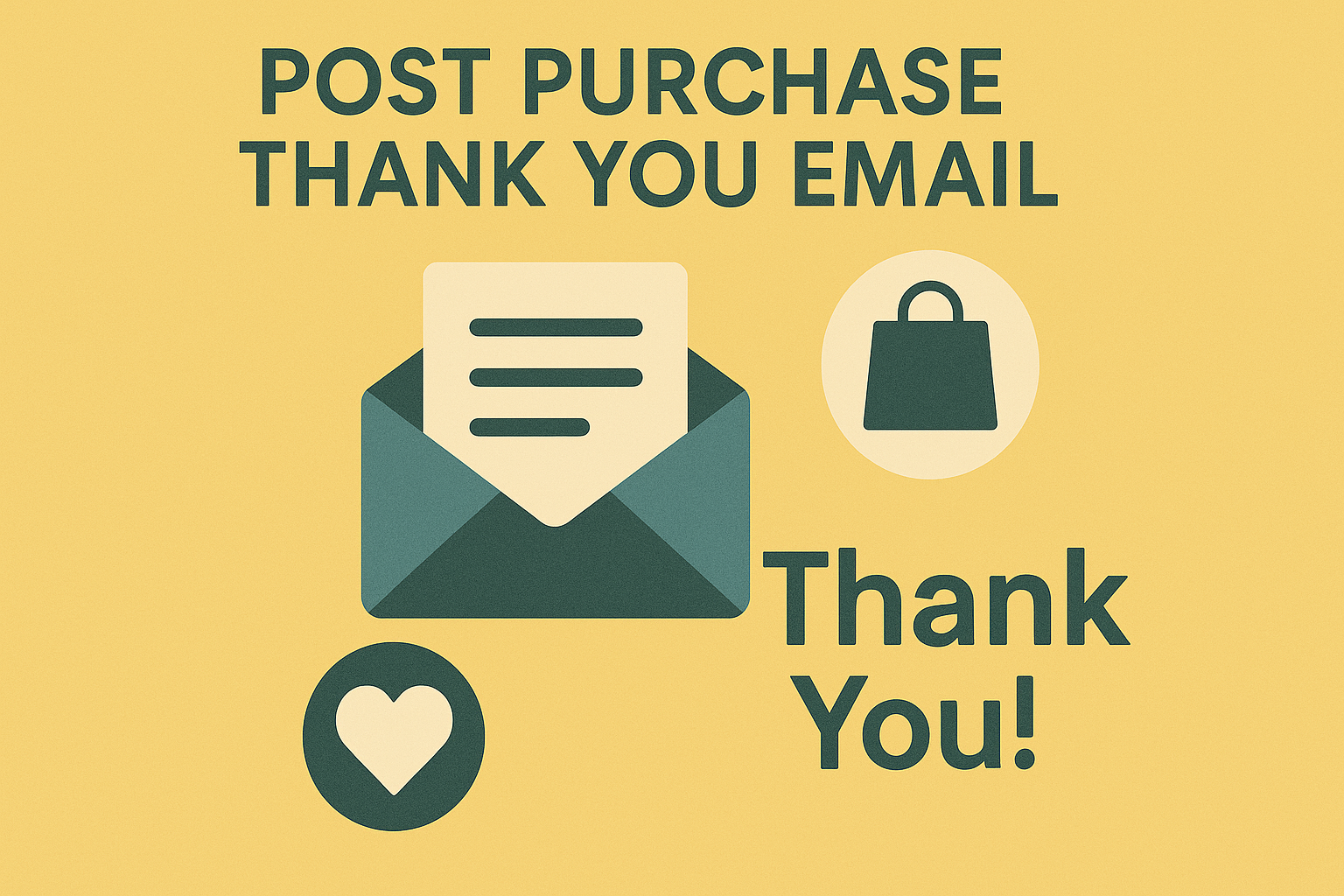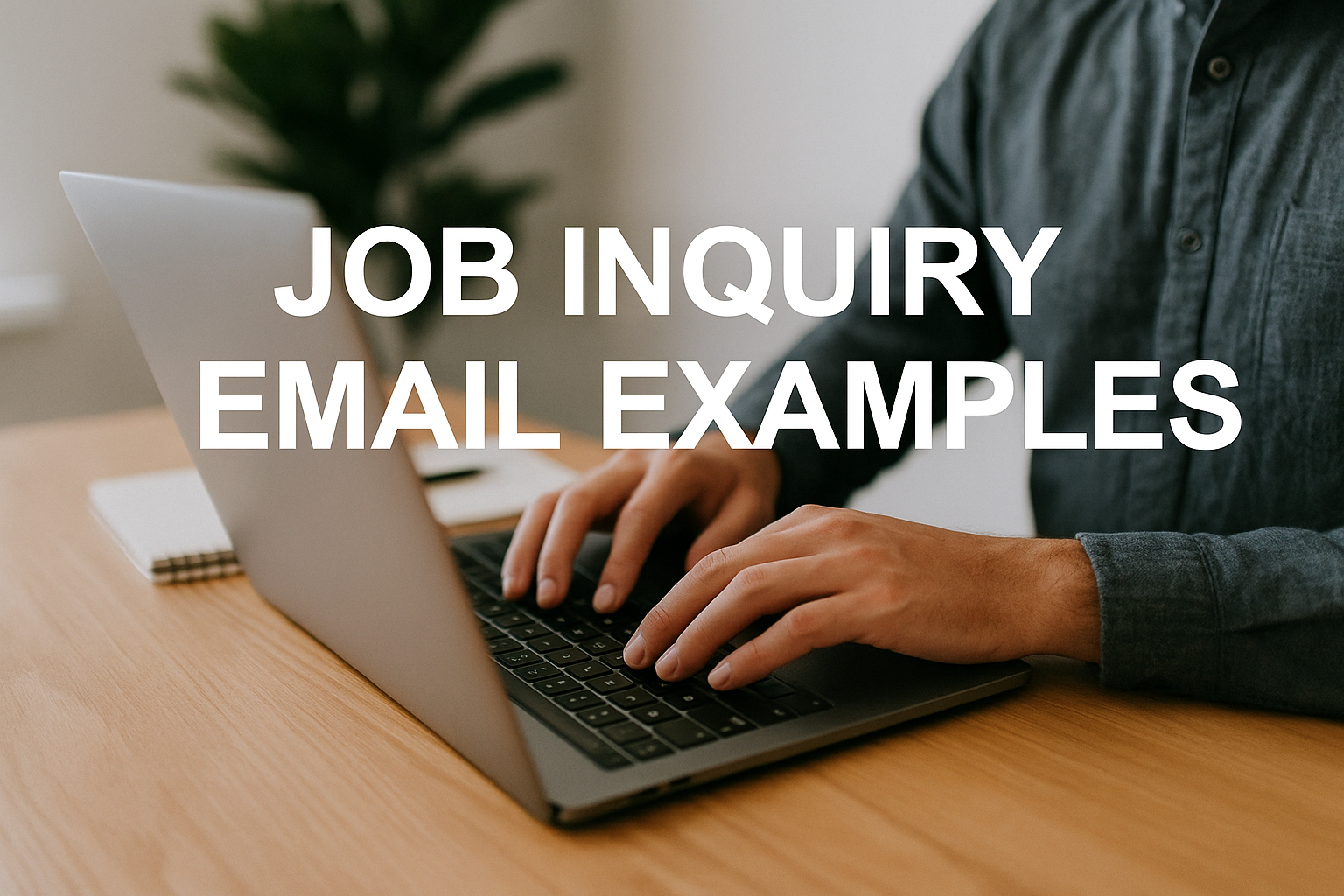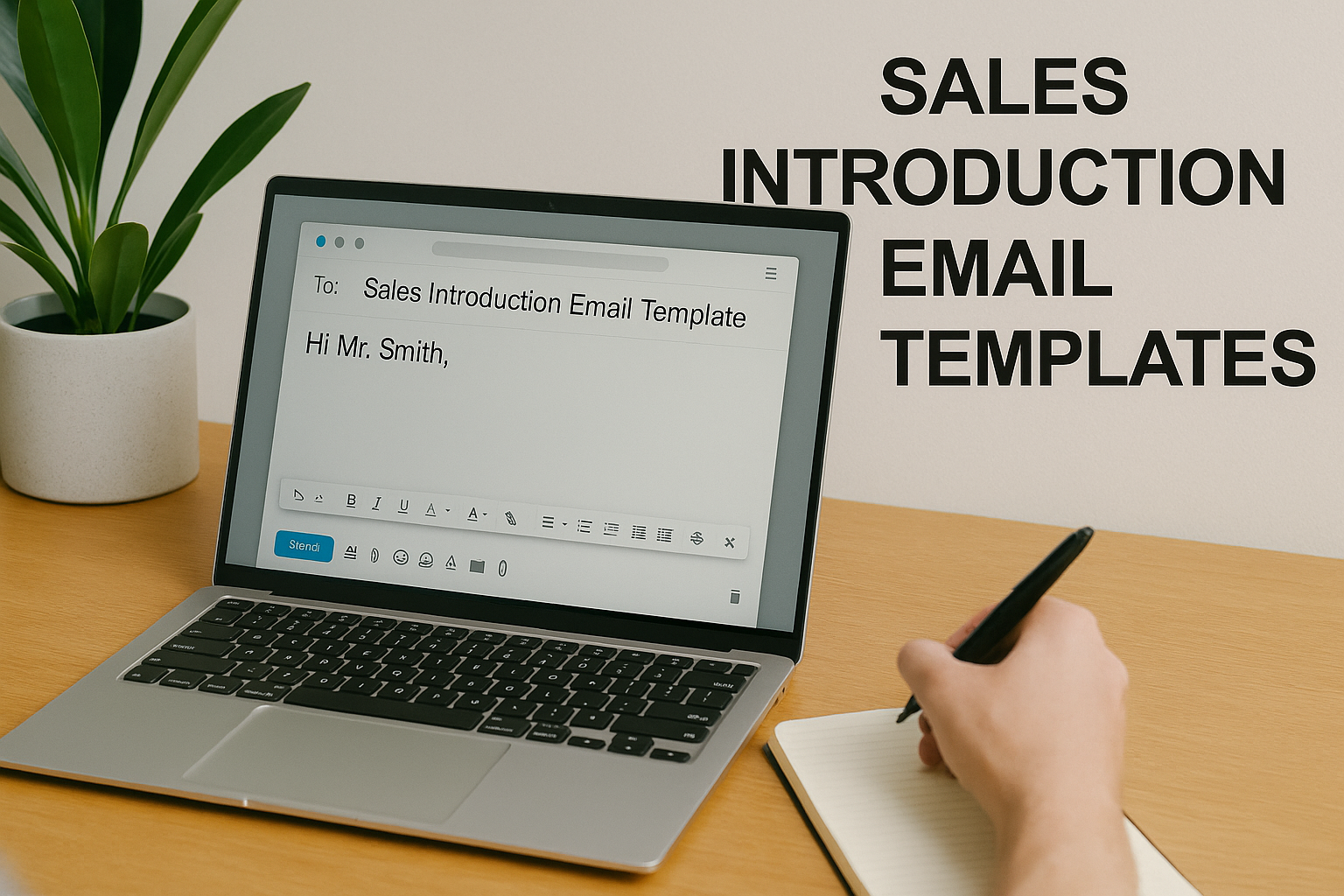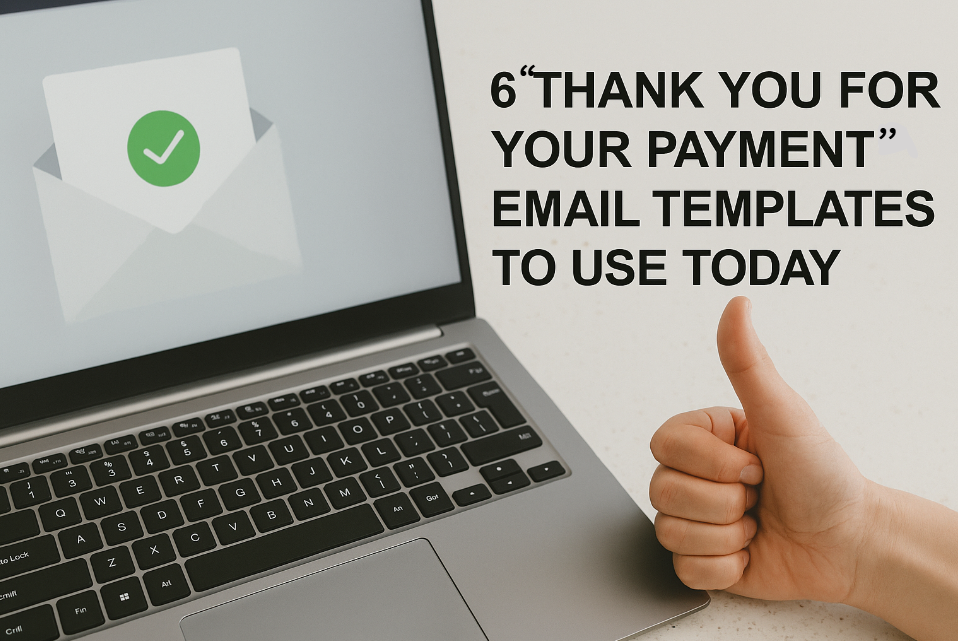How to Craft the Perfect Cold Email for Job Inquiries
Key Takeaways
-
Your research on the company and the decision-maker allows you to customize your cold email for relevance and impact, improving your likelihood of being noticed.
-
By articulating a crisp value proposition and aligning your skills with the company’s needs, you are showing how you are likely to address real challenges.
-
Personalizing your message beyond just using their name demonstrates sincere interest and makes you memorable among form letters.
-
Formatting your e-mail for readability and conciseness, with a professional-but-casual tone, facilitates engagement with your message.
-
Strategic follow-up and a positive, relationship-oriented perspective can bring you further.
-
By steering clear of such blunders as ambiguous asks, self-focused vocabulary, and impersonal verbiage, you’re setting yourself up to be heard and to inspire action.
Looking for a way to reach hiring managers—even when no job is posted? A cold email template for a job gives you a simple, repeatable format to introduce yourself, spotlight your skills, and show genuine interest in a company.
Templates save time and remove the guesswork. They help you make a smart first impression that’s clear, concise, and easy to read—while still leaving room to personalize the details.
In this post, you’ll get the essential building blocks (subject line, opener, value, CTA, and sign-off) plus practical tips to tailor the message for any role or company.
The Pre-Writing Mindset
Before you type a word, set your aim: respect the reader’s time, align with their goals, and build trust.
-
Principles: be short, reliable, and reflective (show you understand their world).
-
Goal: make it easy to say “yes” to the next step, not to read your life story.
Target Research (so you’re not generic)
Find what the company cares about right now and who to contact.
-
Scan the site: homepage, About/Values, blog, press/news, case studies.
-
Map the need: note launches, priorities, or challenges you can help with.
-
Find the person: use LinkedIn to identify the hiring manager or team lead.
-
Leverage connections: check mutuals for context or a referral (don’t fake familiarity).
-
Be specific: pick the one role/department you’ll target—don’t spray and pray.
Your Value Proposition (why you)
Translate your experience into outcomes they want.
-
Be concrete: swap “good communicator” for results (e.g., “led X to ship 3 weeks early”).
-
Mirror their goals: tie your proof to their mission, product, or market move.
-
Show relevance: “You’re entering [market]; I led [expansion] at [company] to [result].”
-
One-liner summary: “I help [type of company] achieve [specific outcome] via [skill].”
Mindset Shift (doors, not chores)
Cold emailing starts relationships—even if some messages go unanswered.
-
Detach from outcome: expect silence sometimes; follow up once or twice politely.
-
Be human: friendly tone, short note, one clear ask.
-
Play the long game: today’s “no reply” can become tomorrow’s intro or opening.

Craft Your Cold Email Template
Keep it short, direct, and easy to scan. Aim for a warm-professional tone, add smart personalization (and a tasteful compliment), and keep the whole note under ~150–175 words.
1. The Subject Line

-
Keep it ≤7 words, specific, and relevant.
-
Avoid vague lines like “Job Inquiry.”
Examples:
-
“Quick idea re: your AI launch”
-
“Interested in your Growth role”
-
“Question about Marketing team plans”
-
2. The Opening

Begin with a friendly hello, and address the individual by name if you can. Mention a mutual friend or interest to personalize your opening. A subject like “Inspired by Your AI Launch” should connect to your opening line, e.g., “I caught your recent product launch in online media and was struck by the team vision.
Make your purpose clear right away: “I’m reaching out to see if we could connect about potential roles.” This establishes an upbeat mood and informs the reader of your reason for contacting.
3. The Connection

Connect your experience to the company’s present objectives or initiatives. Call out if you’ve worked with the company before, or have experience with similar challenges. Emphasize what you and the company have in common—whether it’s a belief in innovation or a results-driven approach.
Describe your pertinence in 1-2 sentences, linking your abilities/experience to their research-based needs.
4. The Value
Make sure you’re explicit in what you’re offering. Give one or two brief examples: “In my last role, I grew web traffic by 30% in six months.” Connect your abilities to immediate impact, demonstrating how you’ll assist the team in achieving its objectives.
If you have insider knowledge of the industry or special skills, reference them here. State the benefit to the recipient clearly and specifically.
5. The Ask

State your request plainly: “I’d love to schedule a 15-minute call next week.” Use a straightforward CTA that’s easy to say yes to. Propose a concrete next step with a courteous, engaged tone.
It makes it more likely that you’ll hear back than that you’ll hear crickets.
6. The Closing

Thank you for your time. Include your contact information for a convenient response. Reiterate your interest in connecting.
Write your cold email template with a neat sign-off like “best regards.” Make it cordial, not stodgy.
Personalization Beyond a Name

Personalizing cold job emails is more than sprinkling in a first name—it’s about relevance. Generic notes get ignored (or flagged). Short, specific messages that reflect the company, the role, and the person reading them get opened and replies. Studies regularly show big lifts when emails are tailored (e.g., higher open and response rates), and even personalized subject lines tend to perform better.
The 3-Tier Personalization Framework
-
Tier 1 — Basics (always on): Name, company, role, and a clear, role-relevant subject line.
-
Tier 2 — Triggers (nice to have): Tie your note to a recent event (launch, funding, award, expansion).
-
Tier 3 — Deep dive (for priority targets): A sentence that connects your specific result to their current priority.
Keep it 50–125 words. Every sentence should earn its spot.
Company Triggers
Reference something current to prove your interest is real—and then link it to your value.
How to do it
-
Mention a recent launch, award, or strategy shift.
-
Connect your experience directly to that event.
Example openers
-
“Congrats on the APAC expansion—I led partner enablement for a similar rollout at Acme.”
-
“Loved your AI product launch—I managed go-to-market for two ML features at BetaCo.”
Subject line ideas
-
“Quick idea re: your APAC launch”
-
“Note on your AI release + growth”
Role-Specific Pain
Identify typical pains for the role and position yourself as the fix—without jargon.
Find pains via:
-
Recent job ads, product updates, earnings calls, and team blog posts.
Translate your wins:
-
“Cut reporting time 30% by automating weekly dashboards.”
-
“Increased trial-to-paid +18% with onboarding tweaks.”
One-liners:
-
“If the team is tightening attribution, I built an MMM-lite playbook that reduced CPA 12%.”
-
“If you’re scaling content ops, I shipped a brief system that doubled output without adding headcount.”
Personal Connection
A small, authentic link can lift response—shared product use, school, community, or event.
Light-touch examples:
-
“I used [Their Product] in my last role—happy to share a short case on how we deployed it.”
-
“We both volunteer with [Cause]—appreciated your notes on operator burnout.”

Common Cold Email Mistakes
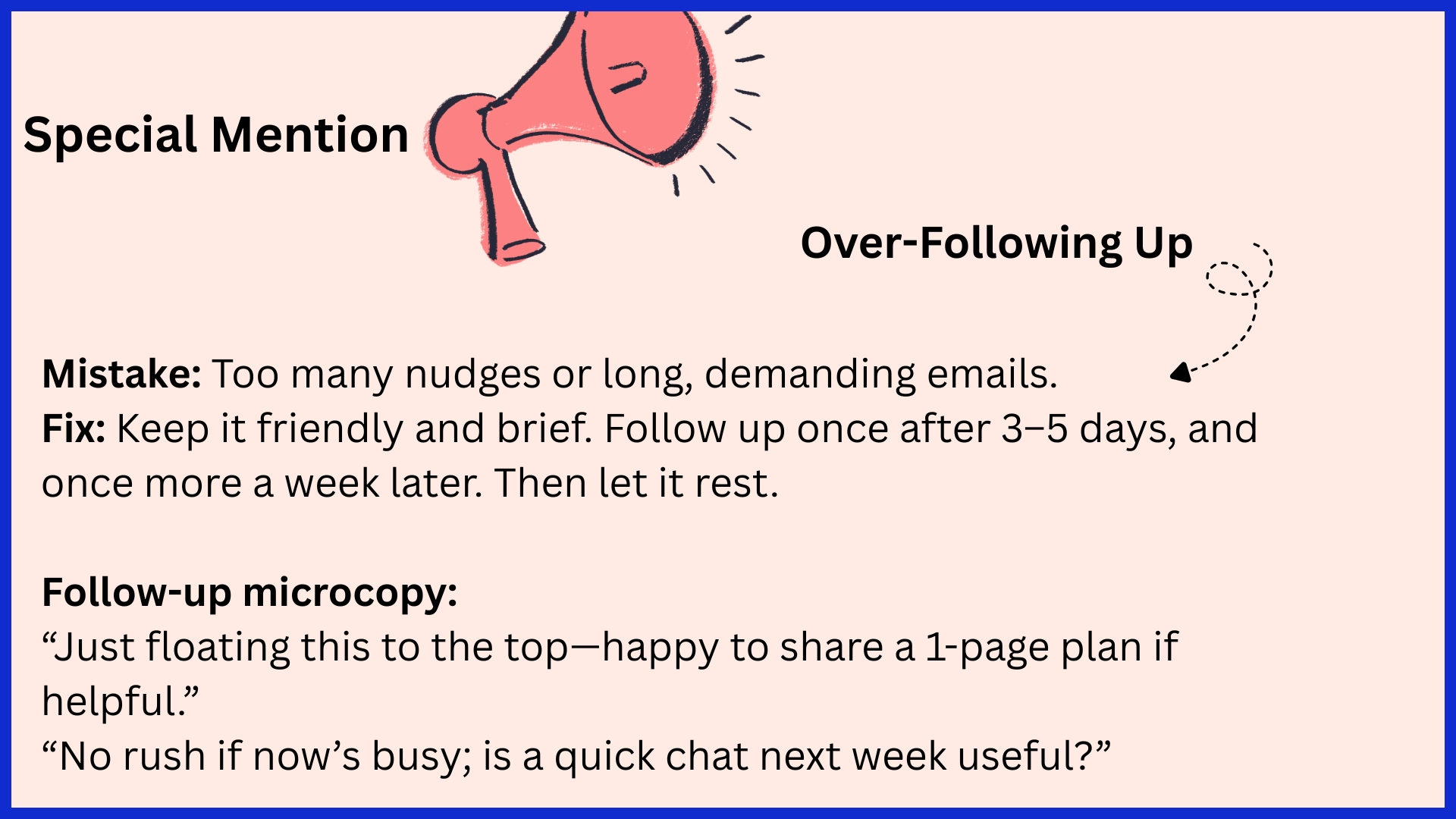
Cold emailing for jobs works best when it’s short, human, and clear. Avoid these common pitfalls and use the quick fixes below.
Generic Language
Mistake: Vague subjects and cookie-cutter intros get deleted.
Why it hurts: People decide to open or delete from the subject alone.
Fix: Personalize the subject and first line with something specific.
Instead of:
-
Subject: “Looking for work”
-
Opener: “To whom it may concern…”
Try:
-
Subject: “Quick idea re: your solar project”
-
Opener: “Hi Maya — I loved your team’s renewable energy case study last week.”
Self-Centered Focus
Mistake: “I want a job / I want to work at your company.”
Why it hurts: It’s about you, not their priorities.
Fix: Lead with how you solve a problem they have.
Instead of:
-
“I’m a strong communicator and hard worker.”
Try:
-
“I reduced reporting time 30% by automating weekly dashboards—happy to set this up for your marketing team.”
Vague Requests
Mistake: “Let me know if you have opportunities.”
Why it hurts: No clear next step = no reply.
Fix: One simple CTA with a light time frame.
Instead of:
-
“Would love to connect.”
Try:
-
“Open to a 15-minute chat next week to see if my analytics playbook could help your Q4 goals?”
The Recipient’s Psychology
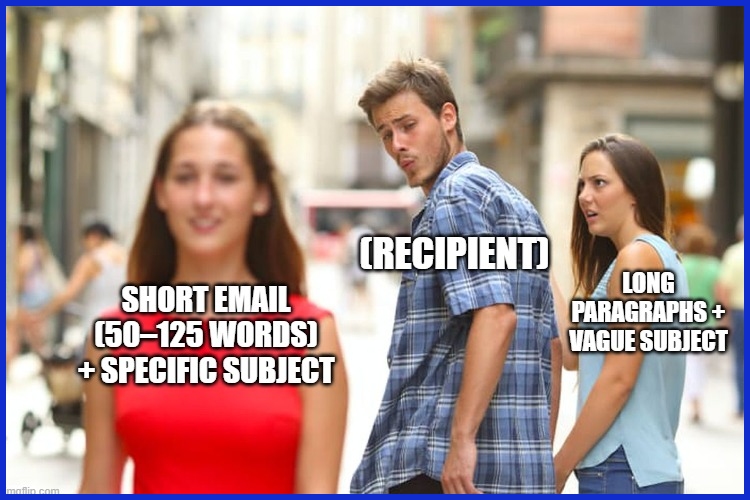
The foundation of a solid cold email template is knowledge of the recipient’s psychology. If your recipients get dozens of emails a day, then they skim messages and make snap decisions about whether to continue reading. If your note appears difficult to read or is too lengthy, it may be passed over.
Brief, specific emails — preferably in the 50-125 word range — are most likely to receive an answer. By personalizing each email for the recipient’s needs or interests, you can help cut through the clutter. Your subject line is your introduction–it can be the difference between your email being opened or trashed.
Cognitive Load
Too much, too soon can overload recipients. Busy professionals receive dozens or hundreds of emails every day, so their cognitive energy is a precious resource. To assist them, simplify your message.
Employ short sentences and chunk your ideas! If you need to cover more than one point, list them out:
-
Use bullet points for clarity
-
Limit each point to one idea
-
Bold or highlight key phrases sparingly
A nice, clean design counts. No large paragraphs. Give the reader’s eye a chance to breathe by leaving sufficient white space. Plain language is best. For instance, rather than “I’d be happy to discuss synergies,” simply say, “I’d like to discuss how I can assist your team.” This strategy honors the reader’s time and brain.
Conclusion
Cold emails that get jobs are short, specific, and human. Lead with plain language, a brief intro, one clear ask, and a proof link (portfolio, case study, GitHub). Add a single line that shows you did your homework about the company or role. Skip the fluff, skip the hype—follow up once or twice politely, then move on.
Want to improve fast? Plug your templates into KPI.me to A/B test subject lines, track open/reply rates, find your best follow-up window, and see which proof links actually get clicks—then double down on what works.
Hit send. Measure. Iterate. Start more conversations—and turn a cold email into your warmest lead.
Frequently Asked Questions
What is a cold email for a job?
A job cold email is an unsolicited email to a potential employer, crafted to introduce yourself and request a chance at your dream job or specific opportunity.
How do I personalize my cold email template?
Demonstrate you’ve researched the organization and why you’re interested in your dream job.
How long should a cold email for a job be?
To enhance your job hunt, make your email less than 150 words, ensuring it leaves a lasting impression and increases the chances of a response.
What should I avoid in a cold email for a job?
Ditch templates and spelling errors in your job hunt. Concentrate on crafting a strong resume that highlights value and relevance.
How soon should I follow up after sending a cold email?
Wait roughly a week before following up on your job hunt; this shows persistence and interest without sounding aggressive.
Can a cold email really help me get a job?
A well-crafted cold email can get you in, showcasing your initiative and abilities while creating a lasting impression in your job hunt.
What is the best subject line for a cold email for a job?
To ensure your email stands out during your job hunt, make sure your subject line is clear, such as “Inquiry About Potential Opportunities – [Your Name]” or “Interest in [Position] at [Company].” This approach helps your email catch the attention of hiring managers.

